Middle East
Iran, Russia, China discuss Tehran’s nuclear programme at Beijing meeting | Nuclear Weapons News
Meeting between top diplomats from three countries signals Tehran may be ready for renewed negotiations on its nuclear programme.
Diplomats from Iran, Russia and China are meeting in Beijing for talks on Tehran’s nuclear programme that could lead to negotiations following years of delay.
Beijing said the three countries hope to find a “diplomatic” solution to Iran’s nuclear issue, Chinese state media reported on Friday.
“In the current situation, we believe that all parties should maintain calm and restraint to avoid escalating the Iran nuclear situation, or even walking towards confrontation and conflict,” China’s Foreign Ministry spokesperson Mao Ning told reporters before the meeting.
The meeting was attended by Chinese Vice Foreign Minister Ma Zhaoxu, Russian Deputy Foreign Minister Sergey Ryabkov and Iranian Deputy Foreign Minister Kazem Gharibabadi, who “exchanged views on the Iran nuclear issue and other issues of common concern,” according to Chinese media.
Donald Trump, a year into his first term as United States president in 2018, withdrew from a landmark pact Iran reached in 2015 with the US, Russia, China, Britain, France, Germany and the European Union, in which Tehran agreed to curb its nuclear programme in exchange for the lifting of international sanctions.
Tehran continued to abide by the terms of the deal – which was considered a milestone for the administration of then-US President Barack Obama – but began slowly rolling back its commitments after Trump ended the deal.
The meeting in Beijing between the three diplomats follows a series of overtures from Trump since his return to the White House in January to resume nuclear talks with Tehran.
The US president this week sent a letter to Iran’s Supreme Leader Ayatollah Ali Khamenei calling for new talks but also warning that the US was within its rights to take military action against the country’s nuclear programme.
Iranian President Masoud Pezeshkian responded that he would not negotiate with the US while being “threatened”, and Iran would not bow to US “orders” to talk.
Iran was further enraged after six of the United Nations Security Council’s 15 members – the US, France, Greece, Panama, South Korea and the United Kingdom – held a closed-door meeting this week to discuss its nuclear programme. Tehran said the meeting was a “misuse” of the UN Security Council.
Separately on Friday, Iran also slammed the US for “hypocrisy” after Washington announced new sanctions targeting its oil minister, saying they were “another clear proof of the falsity of these statements and another sign of its hostility to development”.
Ayatollah Khamenei maintains Tehran does not have or want nuclear weapons, but a recent report from the International Atomic Energy Agency said Iran’s stockpile of enriched uranium was close to the requirements for a nuclear bomb.
Middle East
What are Putin’s conditions for a ceasefire in Ukraine? | Conflict News
Russian President Vladimir Putin said on Thursday that Moscow was in favour of the principle of a ceasefire in the war against Ukraine, as proposed by the Donald Trump administration in the United States, but raised questions he said the Kremlin needed answers to before it could commit to a truce.
He said Russia needed to discuss these questions and the terms of a peace proposal with the US.
His comments, the first on the proposed ceasefire, drew criticism from Ukraine and a muted response from Trump, who has oscillated between expressing confidence in Putin’s commitment to a peace deal and threatening Russia with new sanctions if it does not agree to a ceasefire.
Here is what Putin said, the conditions he laid out for Moscow to back a ceasefire, and how the US and Ukraine have reacted to his recent statement:
What is the US-Ukraine ceasefire deal?
On Tuesday, teams representing Washington and Kyiv met in Saudi Arabia’s Jeddah to negotiate terms for peace in Ukraine.
After this meeting, the two countries released a joint statement, proposing an “immediate, interim” 30-day ceasefire on the war front.
The statement placed emphasis on “the exchange of prisoners of war, the release of civilian detainees, and the return of forcibly transferred Ukrainian children” during the ceasefire period.
The document did not mention sanctions on Russia or security guarantees for Ukraine, but it did mention that Ukraine’s European allies would be “involved in the peace process”.
The document also did not specify what would happen with the Ukrainian soldiers in Russia’s Kursk.
What did Putin say about the ceasefire?
Nothing, for almost two days.
Then, on Thursday, at a news conference alongside Belarusian President Alexander Lukashenko, Putin responded to the ceasefire proposal.
He said the idea of a ceasefire was “correct” and Russia supported it, in principle. “We agree with the proposals to cease hostilities,” he told reporters in Moscow.
But, he added, “there are issues that we need to discuss, and I think that we need to talk about it with our American colleagues and partners, and, perhaps, have a call with President Trump and discuss it with him.”
What ‘issues’ does Putin want resolved before a ceasefire?
The Russian president outlined three questions and suggested that resolving them in a manner satisfactory to Moscow would be preconditions for the Kremlin to accept a ceasefire.
How will the Kursk incursion play out?
The first question Putin posed pertains to Ukrainian troops in the Russian region of Kursk.
In August last year, the Ukrainian army launched a surprise incursion into Kursk, seizing territory.
While the Russian army has now reclaimed 1,100 square km (425 square miles) of Kursk – almost the whole area that Ukrainian forces had grabbed – Kyiv’s troops are still present.
“Will all those who are there come out without a fight? Or will the Ukrainian leadership order them to lay down arms and surrender?” Putin questioned.
Will Ukraine mobilise troops and receive new weapons during the ceasefire?
Putin also suggested that a 30-day ceasefire could be used by Ukraine to mobilise new forces at a time when its troops are facing setbacks not just in Kursk but also in eastern Ukraine, where Russia has made slow, grinding gains in recent months.
During the news conference, Putin said “Russian troops are advancing in almost all areas of the front… So how will these 30 days be used? For forced mobilisation to continue in Ukraine, for weapons to be delivered there, for the newly-mobilised units to be trained? … How can we and how will we be guaranteed that nothing like that will happen? How will control be organised?”
Yuri Ushakov, Putin’s foreign policy adviser, also said on Thursday that the 30-day pause in fighting would only help Ukrainian troops regroup, deeming the ceasefire a “temporary respite” for the Ukrainian army.
In recent months, Ukraine has suffered manpower shortages. In January, Ukrainian troops retreated from Kurakhove, a town in Ukraine’s Donetsk region, when Russian troops claimed control.
Who will verify the ceasefire?
Putin also questioned how the ceasefire would be monitored and who would ensure that both parties are following the agreement.
“We proceed from the fact that this cessation should be such that it would lead to long-term peace and eliminate the original causes of this crisis,” he said.
“Who will give orders to stop hostilities? … Who will determine where and who has violated a possible ceasefire agreement for 2,000 kilometres (1,243 miles)?”
How has the US reacted?
Putin’s comments came shortly after US President Donald Trump’s special envoy Steve Witkoff arrived in Russia to meet with Putin and other Russian officials. Although Witkoff is officially Trump’s Middle East envoy, he has also been involved in Russia relations.
Last month, he became the first high-level US official to travel to Russia since its 2022 invasion of Ukraine. During this visit, he secured the release of Marc Fogel, an imprisoned American, in exchange for the US releasing imprisoned Russian Alexander Vinnik. Witkoff was also part of the US team during negotiations with Russian officials in Saudi Arabia.
On Thursday, at the beginning of a meeting with NATO Secretary-General Mark Rutte, Trump said that Putin had released “a very promising statement, but it wasn’t complete”.
“Now we’re going to see whether or not Russia’s there. And if they’re not, it’ll be a very disappointing moment for the world.”
Also on Thursday, US Treasury Secretary Scott Bessent told CNBC that Trump is “willing to apply maximum pressure on both sides”, including sanctions on Russia.
Since the beginning of the war in February 2022, the US and its allies have imposed at least 21,692 sanctions on Russia, targeting individuals, media organisations, the military sector, energy sector, aviation, shipbuilding and telecommunications, among other sectors.
Last week, the US temporarily suspended military aid and intelligence sharing to Ukraine, after a White House meeting between Trump and Ukrainian President Volodymyr Zelenskyy spiralled into acrimony.
The aid and intelligence sharing were restored after the US and Ukraine jointly agreed on the 30-day ceasefire agreement in Jeddah.
How has Ukraine reacted?
In his nightly address posted on X on Thursday, Zelenskyy said that Putin is “preparing to reject” the ceasefire proposal.
“Putin is afraid to tell President Trump directly that he wants to continue this war and keep killing Ukrainians,” said Zelenskyy.
Marina Miron, a post-doctoral researcher at the defence studies department of King’s College London, said it would make sense for Russia to stall on a decision about the ceasefire.
“Until the ceasefire is implemented and everybody is on the same page, time will pass, which will probably give the Russians the necessary time to at least get Kursk back so that it removes any potential negotiating bonuses for Ukraine,” Miron told Al Jazeera on Wednesday.
In his address, Zelenskyy added: “Now is the time to increase pressure on him [Putin]. Sanctions must be applied – ones that will work.” The Ukrainian leader said his country is willing to continue working with its US and European partners to further the peace process.
Could the US and Ukraine accept Russia’s peace terms?
It’s unclear. But some experts believe that Trump’s track record suggests that the US could try to accommodate Putin’s concerns. If that happens, Ukraine might have no choice but to accept this.
“If past performance is any guide, [Russia’s] demands will be backed by the US,” Keir Giles, a senior consulting fellow at the London-based Chatham House think tank, told Al Jazeera on Wednesday.
“I think that the Trump administration has shown to Ukraine very clearly that Ukraine is not going to dictate the rules after the debacle in the Oval Office,” Miron added.
Middle East
Hamas ‘ready’ to hand over Israeli captive and four bodies held in Gaza | Israel-Palestine conflict News
The Palestinian group agrees to resume ceasefire talks, promising to free Edan Alexander and hand over four other captives’ bodies.
The Palestinian group Hamas has announced it is ready to free Israeli American captive Edan Alexander and hand over the remains of four other dual nationals, after holding indirect talks with Israel.
Hamas said in a statement on Friday that its delegation received a proposal from mediators on Thursday to resume ceasefire negotiations, and the group’s reply “included its agreement to release the Israeli soldier Edan Alexander, who holds American citizenship, along with the remains of four others holding dual citizenship”.
Earlier, Hamas official Husam Badran said the group “is determined to implement the ceasefire agreement in its various stages, and the occupation’s departure from what was agreed will take us back to zero”.
Following the Palestinian group’s statement, Israel accused Hamas of engaging in “psychological warfare”.
“Whereas Israel accepted the Witkoff framework, Hamas remains firm in its refusal and has not budged an inch,” Prime Minister Benjamin Netanyahu’s office said, referring to US Middle East envoy Steve Witkoff, and accusing Hamas of resorting to “manipulation and psychological warfare.”
On Tuesday, a senior Hamas official had announced that a new round of indirect talks through mediators had begun in the Qatari capital Doha. Israel had also sent a team of negotiators.
The first phase of a truce between Hamas and Israel in the Gaza Strip ended on March 1, without agreement on the next stages.
During the initial six-week phase of the ceasefire, Hamas released 33 captives, including eight who were deceased, in exchange for about 1,800 Palestinian prisoners, many held in Israeli prisons without charge.
After the truce agreement expired without a new deal, Israel swiftly implemented a total blockade on the besieged Palestinian territory, leaving 2.3 million people on the brink of mass starvation.
Al Jazeera’s Tareq Abu Azzoum, reporting from Khan Younis, said civilians “are facing severe and chronic shortage” of basic food and medical supplies.
Olga Cherevko from the UN Office for the Coordination of Humanitarian Affairs (OCHA) told Al Jazeera that the situation was dire “on multiple levels”.
“The hope that began when the ceasefire started is being replaced with fear, alarm and concern that supplies are running out,” she said.
Cherevko said food availability “could deteriorate quite rapidly unless the supplies are restored”. Six of the 25 World Food Programme bakeries have been forced to close because there is no fuel to run them.
According to Gaza’s Government Media Office, shortages have worsened with 80 percent of residents losing access to food sources because of the closing of land crossings.
Israel had also severed electricity to a crucial water desalination plant, threatening Gaza’s potable water supply.
“The water and sanitation situation was already dire with most of the facilities destroyed during the months of fighting. This latest [Israeli] decision reduces access to drinking water to about 600,000 people,” Cherevko said.
Despite the ongoing talks over the next phase of the ceasefire, Israel has continued to bombard Gaza, with attacks on Gaza City and Beit Lahiya killing two children.
Gaza’s Ministry of Health said at least 48,524 people have been killed and 111,955 wounded in Israel’s war on Gaza.
At least 1,139 people were killed in Israel during the October 7, 2023, Hamas-led attacks and more than 200 were taken captive.
Middle East
Iraq says ‘dangerous’ ISIL leader Abu Khadija killed | ISIL/ISIS News
Prime Minister al-Sudani hails the killing of Abdallah Makki Muslih al-Rufay’i as a major blow to ISIL remnants in Iraq.
The leader of the ISIL (ISIS) group has been killed by Iraqi security forces with support from the US-led anti-ISIL coalition, Iraq’s prime minister said.
Prime Minister Mohammed Shia al-Sudani said on Friday that Abdallah Makki Muslih al-Rufay’i, also known as Abu Khadija, was killed by Iraqi security forces, with the support of the US-led coalition fighting ISIL.
“The Iraqis continue their impressive victories over the forces of darkness and terrorism,” Sudani wrote in a statement on X, adding that Abu Khadija was “one of the most dangerous terrorists in Iraq and the world.”
In 2017, Iraq declared victory over ISIL by reclaiming all territories the armed group controlled since the summer of 2014, which was estimated to be about a third of the country’s territory.
But the group still maintains sleeper cells in large areas in Iraq and occasionally launches attacks.
Friday’s announcement coincided with Syria’s interim Foreign Minister Asaad al-Shaibani visiting Iraq, where he said his government was ready to “reinforce cooperation” in the fight against remnants of ISIL.
“Security is a shared responsibility,” al-Shaibani told a news conference alongside Iraqi Foreign Minister Fuad Hussein in Baghdad. “We are ready to reinforce cooperation with Iraq in the fight against Daesh [an Arabic acronym for ISIL] along the whole length of the border. Terrorism knows no borders,” the official INA news agency reported.
He also said one aim of Friday’s visit was to enhance trade between the two countries, and reopening the border would be a fundamental step in doing so.
Iraq shut the frontier on security grounds following the lightning opposition offensive that toppled Syrian President Bashar al-Assad in December.
Relations between the neighbours have been complex since the removal of al-Assad, who was a close ally of the government in Baghdad.
While Iraq is a strategic partner of the United States, it is also a key ally of Iran. Some Iraqi armed groups fought to defend al-Assad’s rule during Syria’s 13-year civil war that began with the security forces’ crackdown on democracy protests in 2011.
Syria’s interim President Ahmed al-Sharaa, who has sought to present a moderate image since coming to power, once fought with al-Qaeda in Iraq against US forces and their allies.
-
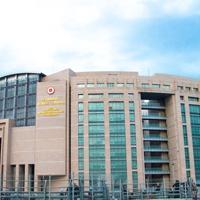
 Daily Agenda2 months ago
Daily Agenda2 months ago5 suspects nabbed for sharing information with Iranian intel
-
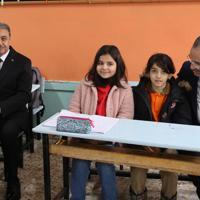
 Politics1 month ago
Politics1 month agoSoutheastern city enforces fines to tackle student absenteeism
-
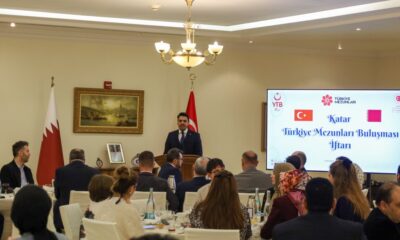
 Lifestyle2 months ago
Lifestyle2 months agoTürkiye’s Embassy in Doha hosts iftar for alumni to foster connections
-
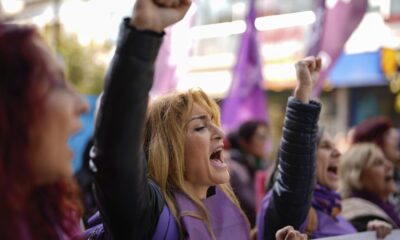
 Refugees2 months ago
Refugees2 months agoInternational Women’s Day: global protests demand equal rights
-

 Sports2 months ago
Sports2 months agoPaulista 19 maç sonra geri döndü, maç sonrası isyan etti
-
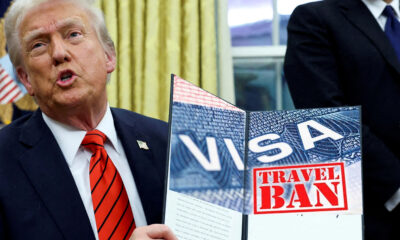
 Daily Agenda2 months ago
Daily Agenda2 months agoTrump hangi ülkelere yasak getirdi.
-
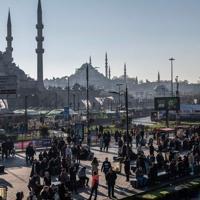
 Politics2 months ago
Politics2 months agoIstanbul ‘may break 110-year temperature record for March’
-

 Daily Agenda2 months ago
Daily Agenda2 months agoMinister Uraloğlu Announced: Halkalı-Gayrettepe Will Fall to 57 Minutes

